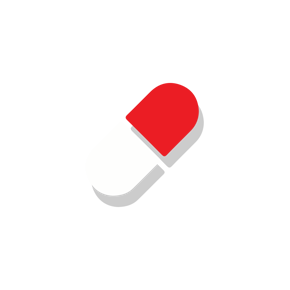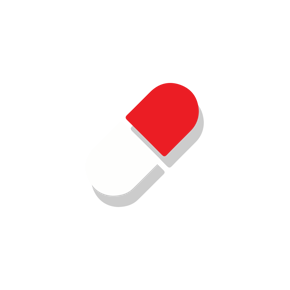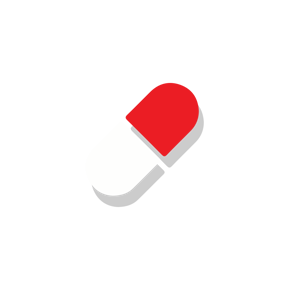The Dangers of Using Hand Sanitizer Before Cleaning a Fish Tank
When it’s time to clean your aquarium, the last thing you should do is apply hand sanitizer before touching the water. While sanitizers are great for killing germs on human hands, they can be toxic to fish and can severely damage the delicate ecosystem inside your tank.
Even a tiny residue of sanitizer on your skin can contaminate the water, harming fish, plants, and beneficial bacteria that keep the aquarium balanced. The alcohols, perfumes, and other chemicals used in sanitizers don’t simply evaporate when submerged — they dissolve into the water and can quickly poison aquatic life.
Fish breathe and absorb water through their gills and skin, which means any chemical contamination affects them directly. That’s why even trace amounts of hand sanitizer can cause stress, fin damage, or even death.
To keep your fish safe, always ensure your hands are completely free from sanitizer, soap, or lotion before cleaning or feeding in the tank.
Suggested Product:Halalys Aquarium Water Conditioner
A specialized formula that neutralizes harmful residues, chlorine, and heavy metals — helping restore safe, clean water after accidental sanitizer exposure.
Why Hand Sanitizer Is Dangerous for Fish
Fish tanks are delicate ecosystems that depend on pure, chemical-free water to keep aquatic life healthy. When hand sanitizer comes into contact with tank water — even in small amounts it can introduce substances that are toxic to fish and disrupt this fragile balance.
Ingredients in Sanitizers and Their Effects on Water
Most sanitizers contain alcohol (ethanol or isopropyl alcohol), fragrances, and antibacterial agents like triclosan or chlorine-based compounds. These ingredients are designed to kill bacteria on your hands — but inside an aquarium, they kill the good bacteria that fish depend on for clean, oxygen-rich water.
Even one drop of sanitizer residue can lower oxygen levels, alter the pH balance, and leave behind toxic traces that stress your fish.
Suggested Product:Halalys Aquarium Safe Hand Gloves
Special gloves designed for fish tank cleaning — protect your hands while keeping your tank safe from sanitizer or soap residue.
Toxic Chemicals for Fish, Such as Alcohol and Chlorine
Alcohol and chlorine are two of the most harmful ingredients in hand sanitizer when it comes to aquatic life.
- Alcohol strips away the protective slime coat on fish skin, making them vulnerable to infection.
- Chlorine compounds can burn gills and tissue, leading to respiratory distress and sudden death.
Unlike in open water, aquariums have no natural way to neutralize these chemicals — meaning even a small dose can quickly become lethal.
Suggested Product:Halalys Chlorine Neutralizer for Aquariums
Instantly removes chlorine and chemical residues from water, restoring a safe environment for your fish.
How Sanitizer Residues Affect Fish Respiration
Fish breathe by filtering oxygen through their gills — but sanitizer residues coat those gills with a thin, sticky film. This reduces oxygen exchange, causing the fish to gasp near the surface or remain unusually still at the bottom.
Over time, this can lead to suffocation, stress, and a weakened immune system, leaving fish vulnerable to disease.
Suggested Product:Halalys Oxygen Booster Tablets for Fish Tanks
Boosts oxygen levels and supports fish recovery after exposure to harmful substances like sanitizers or soap.
Potential Damage When Sanitizer Comes Into Contact with Tank Water
When hand sanitizer or its residues reach aquarium water, the effects can be immediate and long-lasting. Even trace amounts can alter the chemistry of the water, destroy beneficial bacteria, and harm the fish’s protective skin and fins. These effects often appear within hours — and can continue for days if not treated properly.
Disruption of the Biological Balance in the Aquarium
Aquariums depend on a stable biological system made up of beneficial bacteria that break down fish waste and maintain water quality. When sanitizer chemicals like alcohol, chlorine, or fragrance oils enter the tank, they kill these essential microorganisms, disrupting the nitrogen cycle.
As a result, ammonia and nitrite levels rise rapidly, creating a toxic environment that can stress or kill fish within a short time.
Suggested Product:Halalys Aquarium Bio Booster
Restores beneficial bacteria and stabilizes the aquarium’s biological balance after chemical exposure.
Damage to Fish Fins and Skin
The chemicals in hand sanitizer can irritate and burn the delicate tissues of fish. Alcohols, detergents, and fragrance compounds strip away the mucous layer that protects fish skin from bacteria and parasites.
Signs of sanitizer exposure include:
- Torn or frayed fins
- Red or white patches on the skin
- Unusual rubbing against tank surfaces
Without treatment, these wounds can become infected and lead to further health problems.
Suggested Product:Halalys Fish Skin Repair Treatment
Promotes healing of damaged fins and skin while reducing infection risk caused by sanitizer or other irritants.
Death of Beneficial Bacteria Responsible for Water Filtration
Sanitizer exposure not only harms fish but also wipes out the invisible heroes of your tank — the good bacteria that filter harmful waste. Without them, the water quickly becomes cloudy, foul-smelling, and toxic.
This can lead to spikes in ammonia and nitrite, both of which can suffocate fish or cause irreversible gill damage. Rebuilding these bacterial colonies takes time, so prevention is always the best strategy.
Suggested Product:Halalys Aquarium Starter Bacteria Kit
Reintroduces vital bacteria into your tank to restore water quality and protect fish health after sanitizer contamination.
The Proper Way to Wash Your Hands Before Cleaning the Tank
Keeping your aquarium clean doesn’t require chemicals — in fact, the fewer you use, the safer your fish will be. The biggest mistake fish owners make is cleaning their hands with hand sanitizer or scented soap before touching the tank. While it might sound hygienic, those residues can harm your aquatic pets and upset the tank’s balance.
Here’s how to wash your hands the right way to protect your fish:
Use Only Water Without Soap or Sanitizer
Before placing your hands in the tank, rinse them thoroughly with plain running water — no sanitizer, no soap, and no lotions. This removes dust and surface dirt without leaving behind any toxic chemicals that could leak into the aquarium.
If your hands are oily or sticky, rinse longer using slightly warm water, but still avoid all cleaning products.
Rinse Hands Thoroughly with Lukewarm Water
Always use lukewarm (not hot) water to rinse your hands. Hot water can cause skin oils to mix with tank water, affecting clarity and chemical stability.
Lukewarm water helps remove contaminants while keeping your skin clean and safe for handling fish or decorations.
Dry Your Hands Before Touching the Tank or Equipment
After rinsing, dry your hands completely using a clean towel. Wet hands can still carry tap-water chlorine or small amounts of dissolved minerals, which can irritate sensitive species.
Make sure your hands are fully dry before adjusting equipment, handling food, or changing filters.
Rinse Hands Thoroughly with Lukewarm Water
Always use lukewarm (not hot) water to rinse your hands. Hot water can cause skin oils to mix with tank water, affecting clarity and chemical stability.
Lukewarm water helps remove contaminants while keeping your skin clean and safe for handling fish or decorations.
Dry Your Hands Before Touching the Tank or Equipment
After rinsing, dry your hands completely using a clean towel. Wet hands can still carry tap-water chlorine or small amounts of dissolved minerals, which can irritate sensitive species.
Make sure your hands are fully dry before adjusting equipment, handling food, or changing filters.
Tips to Avoid Aquarium Contamination
Maintaining a clean and healthy aquarium isn’t just about water changes — it’s also about keeping harmful substances out. Many fish owners unintentionally contaminate their tanks by using hand sanitizer, scented soaps, or general-purpose cleaning products near the water.
Follow these easy tips to make sure your aquarium stays safe and balanced at all times:
Use Separate Tools Specifically for Tank Cleaning
Never use the same sponge, towel, or bucket for both household cleaning and aquarium maintenance. Household items often carry chemical residues from detergents, sanitizers, or disinfectants that can harm fish even in trace amounts.
Keep a dedicated set of tools only for your tank — including nets, brushes, and water buckets and store them away from other cleaning supplies.
Avoid Using Any Chemicals Near the Water
Never spray air fresheners, perfumes, insect repellents, or hand sanitizers anywhere near the aquarium. The vapors alone can settle on the water surface and contaminate it, affecting oxygen exchange and fish health.
Instead, clean the surrounding area with a damp cloth, and always cover the tank when cleaning the room to prevent droplets from entering.
Observe Fish Behavior After Cleaning to Ensure Their Safety
After every cleaning session, watch your fish closely for the next 24 hours. Unusual behavior — such as gasping for air, swimming erratically, or losing color — can indicate contamination.
If you suspect exposure to hand sanitizer or another chemical, perform an immediate partial water change (25–50%) and add a conditioner to neutralize toxins.
Common Questions About Safe Aquarium Cleaning
Can I Use Gloves Instead of Washing My Hands?
Absolutely — and in fact, it’s one of the best ways to protect both you and your fish. Wearing gloves keeps your hands free from direct contact with the water, preventing contamination from sanitizer, soap, or skin oils.
Choose powder-free, unscented gloves designed specifically for aquarium use. Avoid latex gloves with added chemicals or perfumes, as they can also leak toxins into the water.
What’s a Safe Alternative to Hand Sanitizer Before Touching the Tank?
The best alternative is simple rinsing with clean water. If you must disinfect your hands due to other pets or hygiene concerns, wash them with mild soap, rinse thoroughly for at least 30 seconds, and wait until they’re completely dry before touching the tank.
Never use hand sanitizer, even alcohol-free versions, as they may still contain essential oils or antibacterial additives harmful to fish.
What Should I Do If Sanitizer Accidentally Gets Into the Water?
Don’t panic — but act quickly. If hand sanitizer accidentally falls into your fish tank, follow these emergency steps:
- Remove fish immediately to a temporary container with clean, treated water.
- Change at least 50–70% of the tank water.
- Add a water conditioner or detoxifier to neutralize chemicals.
- Replace your filter media and clean tank surfaces carefully.
Monitor your fish for stress, gasping, or color changes over the next 48 hours.
Keeping your aquarium clean and safe doesn’t require strong chemicals — just consistency, care, and the right tools. At Halalys, we’re committed to helping you protect your aquatic pets with eco-friendly, fish-safe solutions for every step of aquarium care.
Explore our full range of aquarium safety and cleaning products atHalalys.com.























































_800.jpeg)